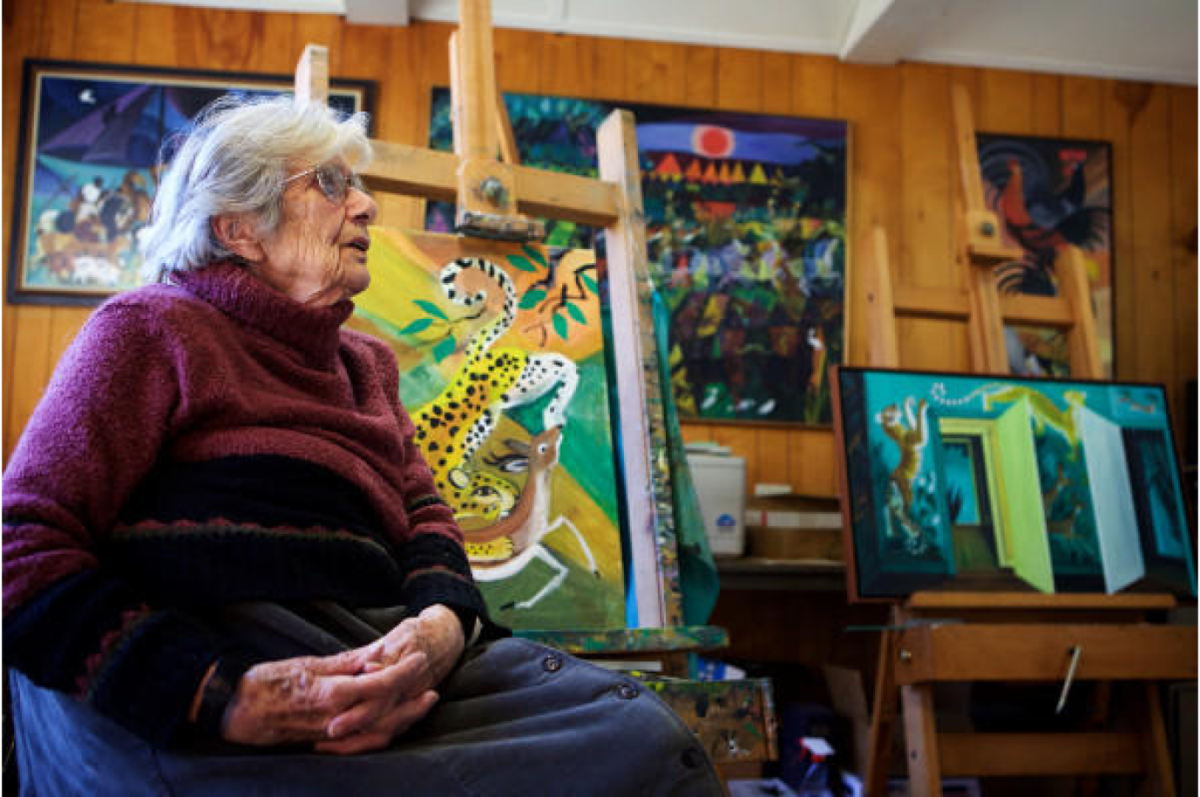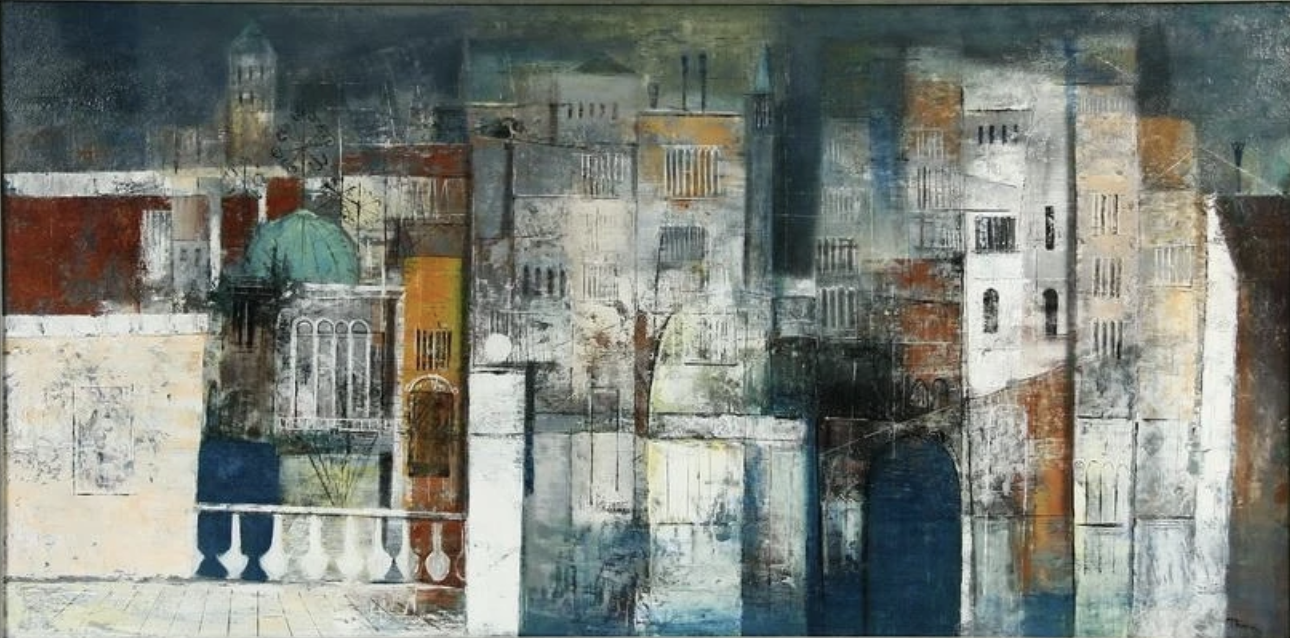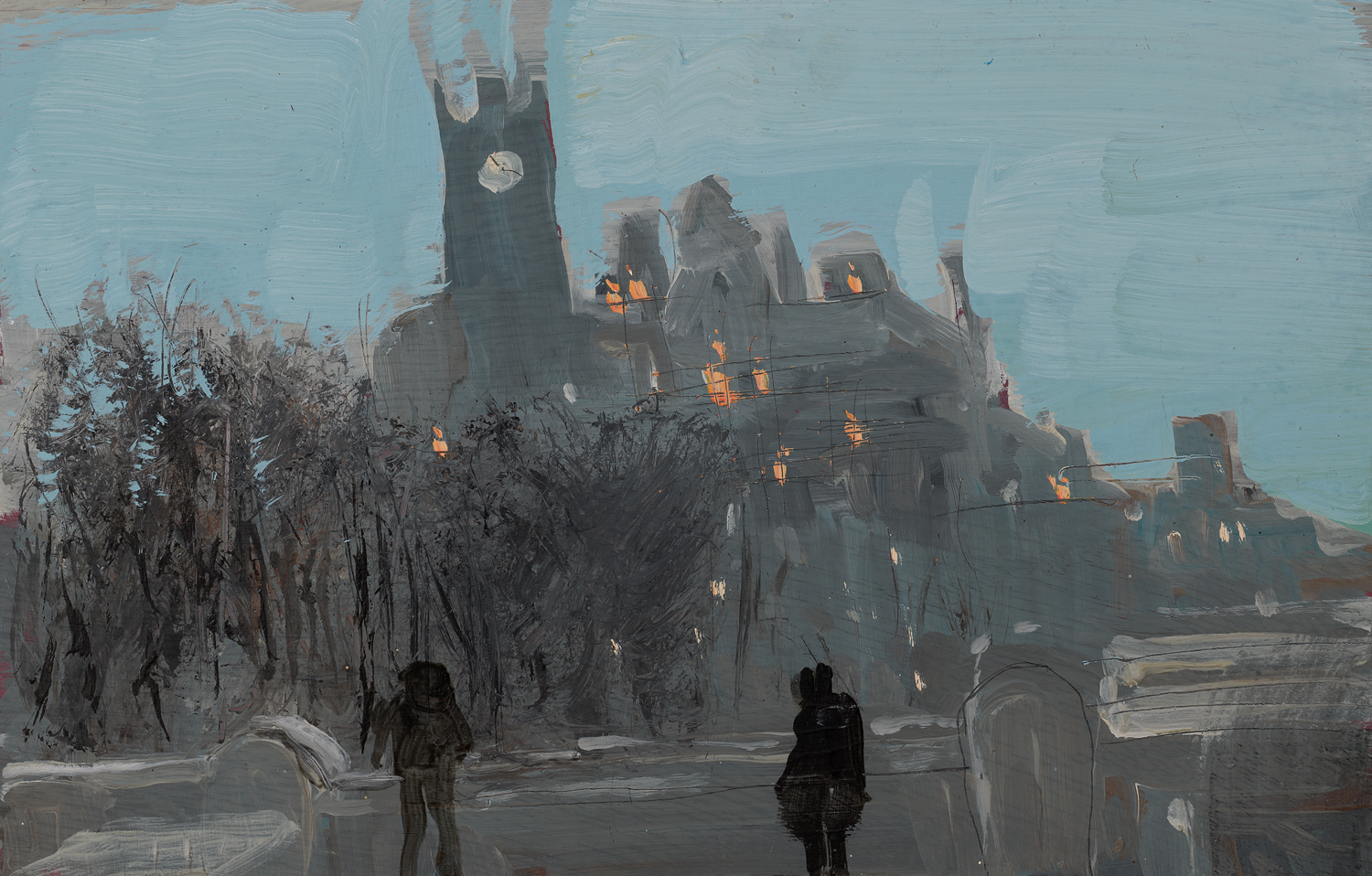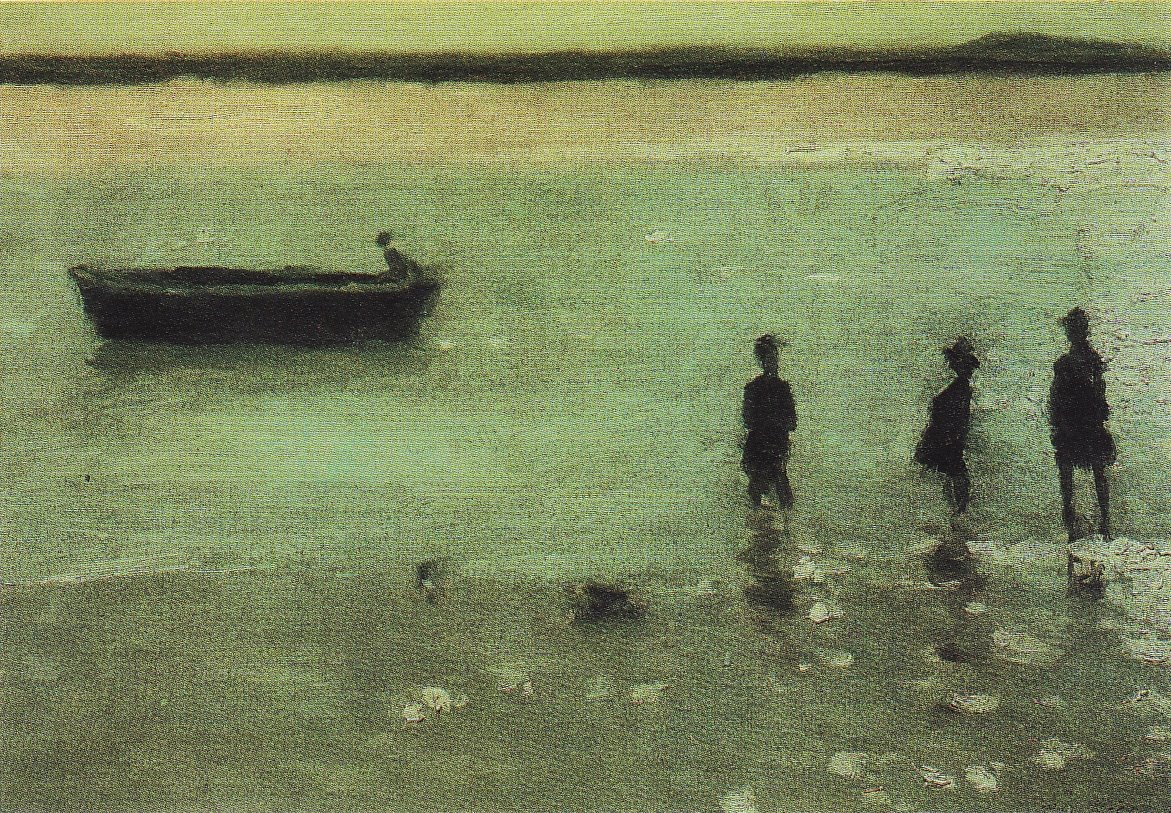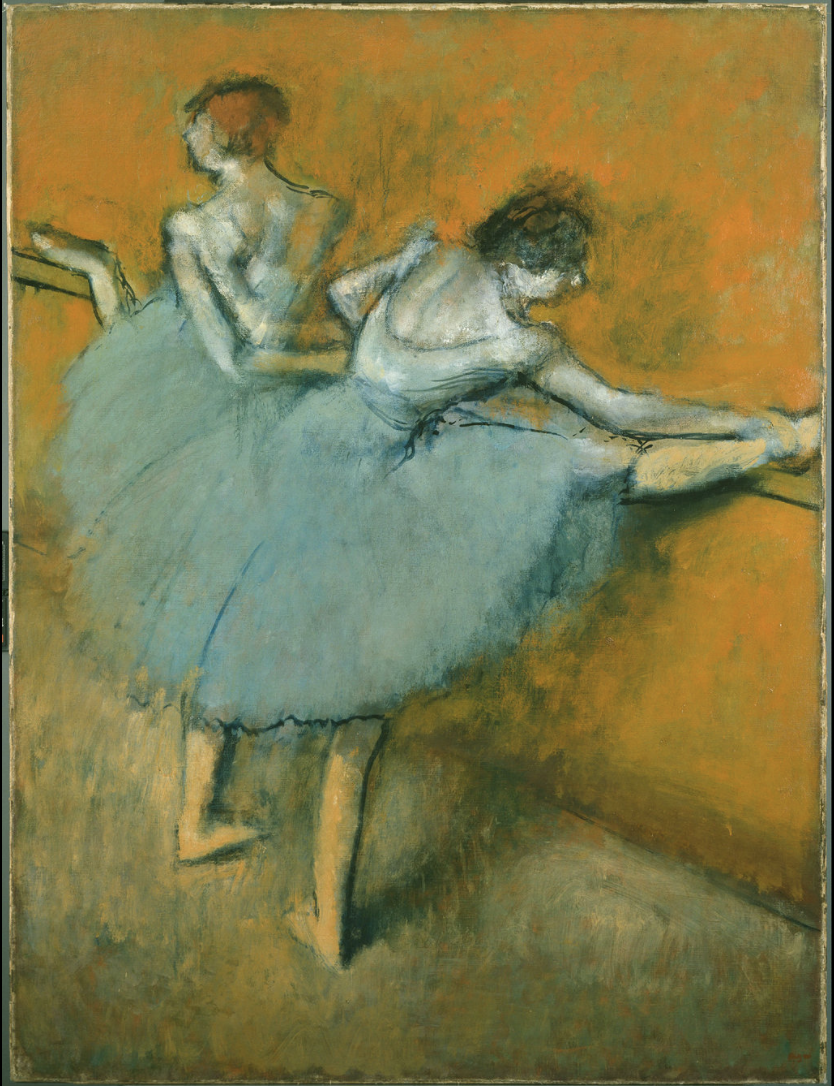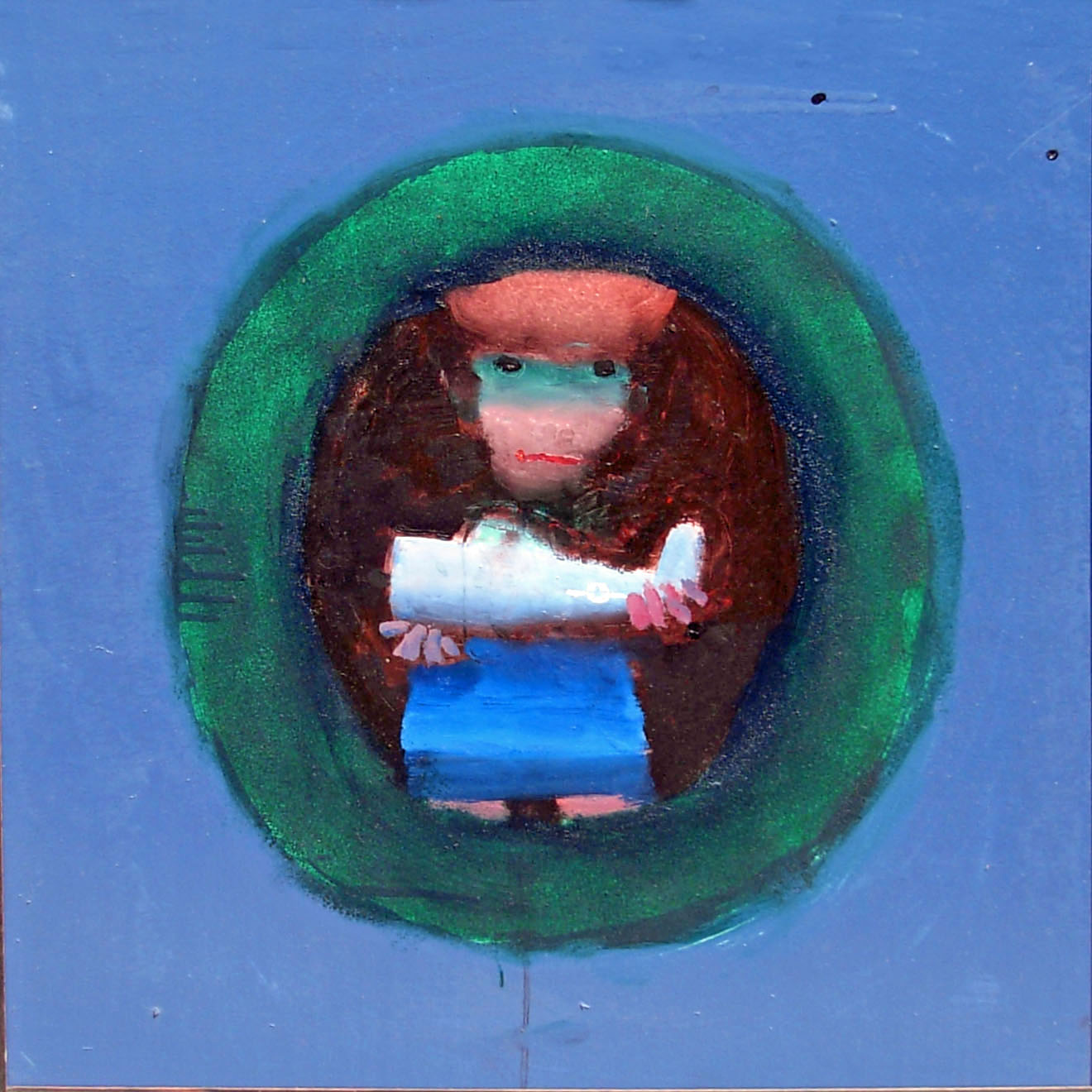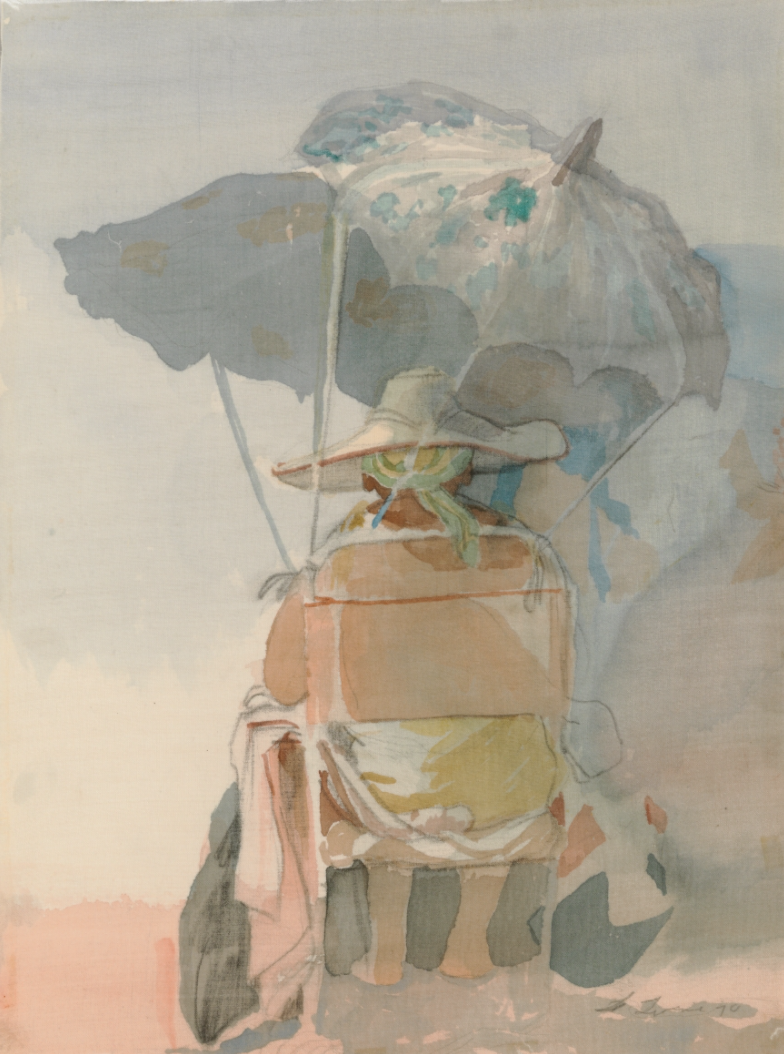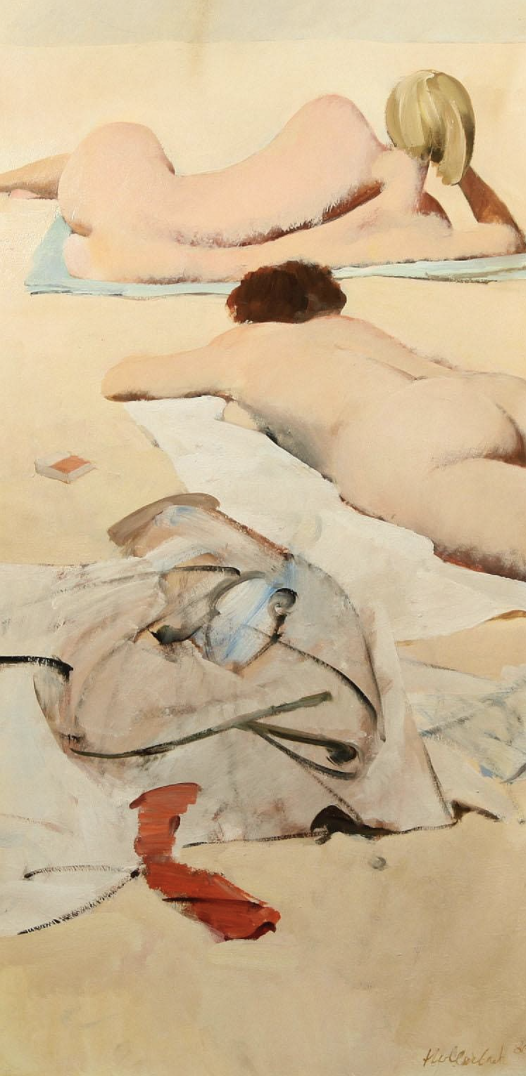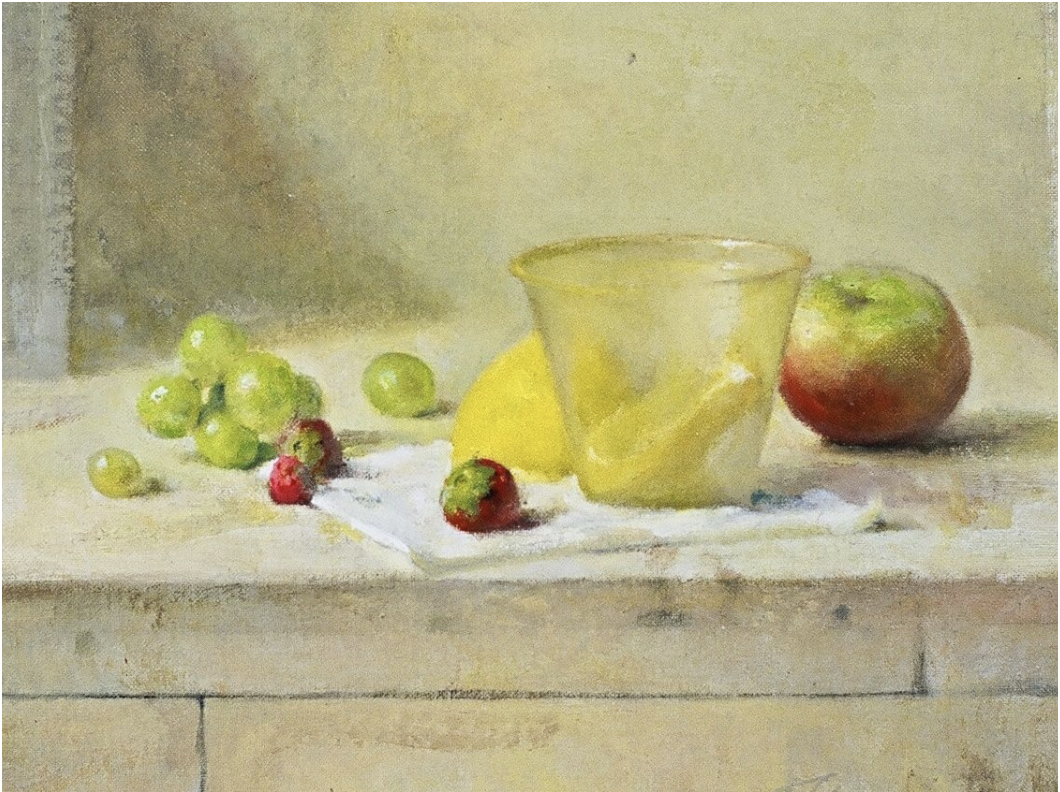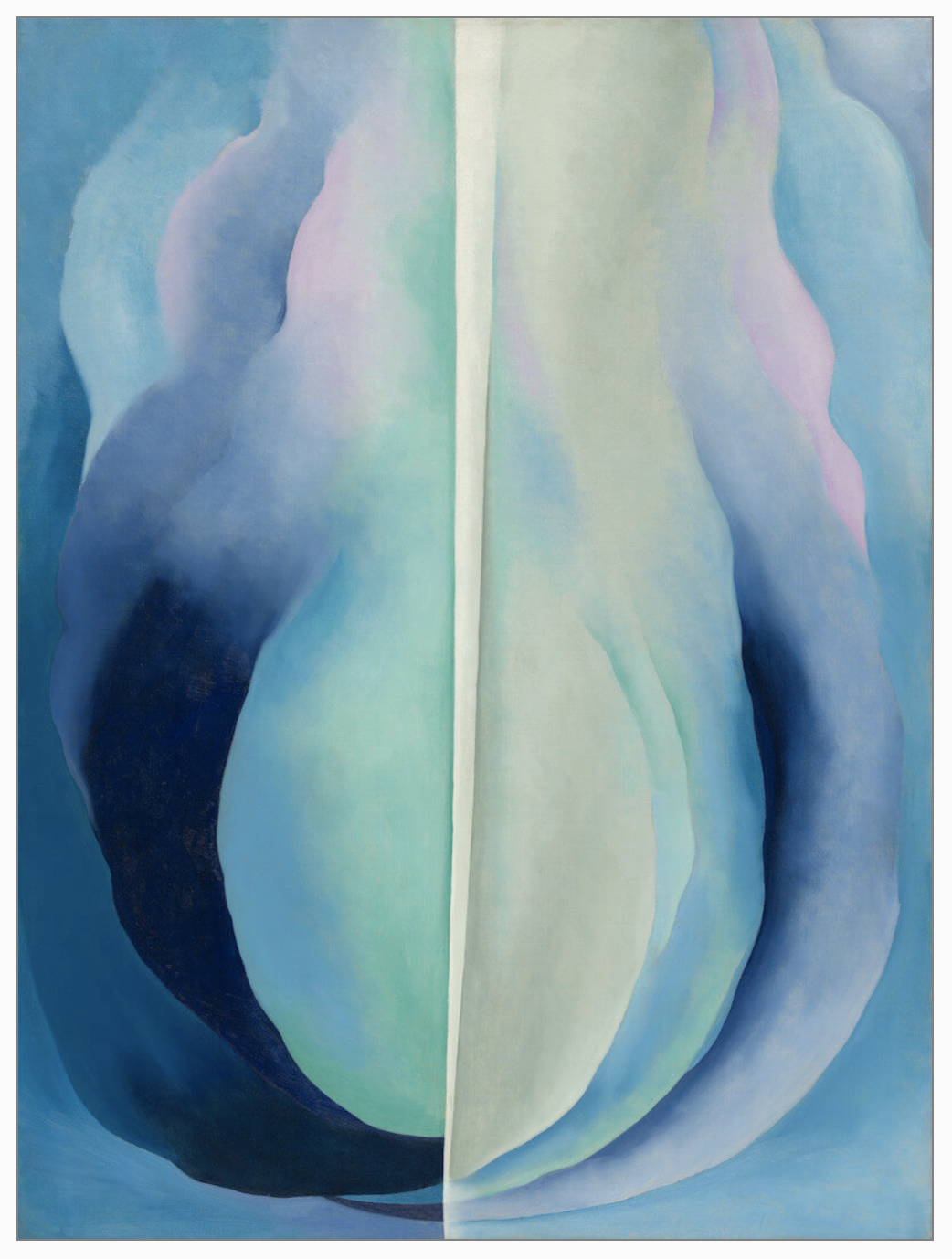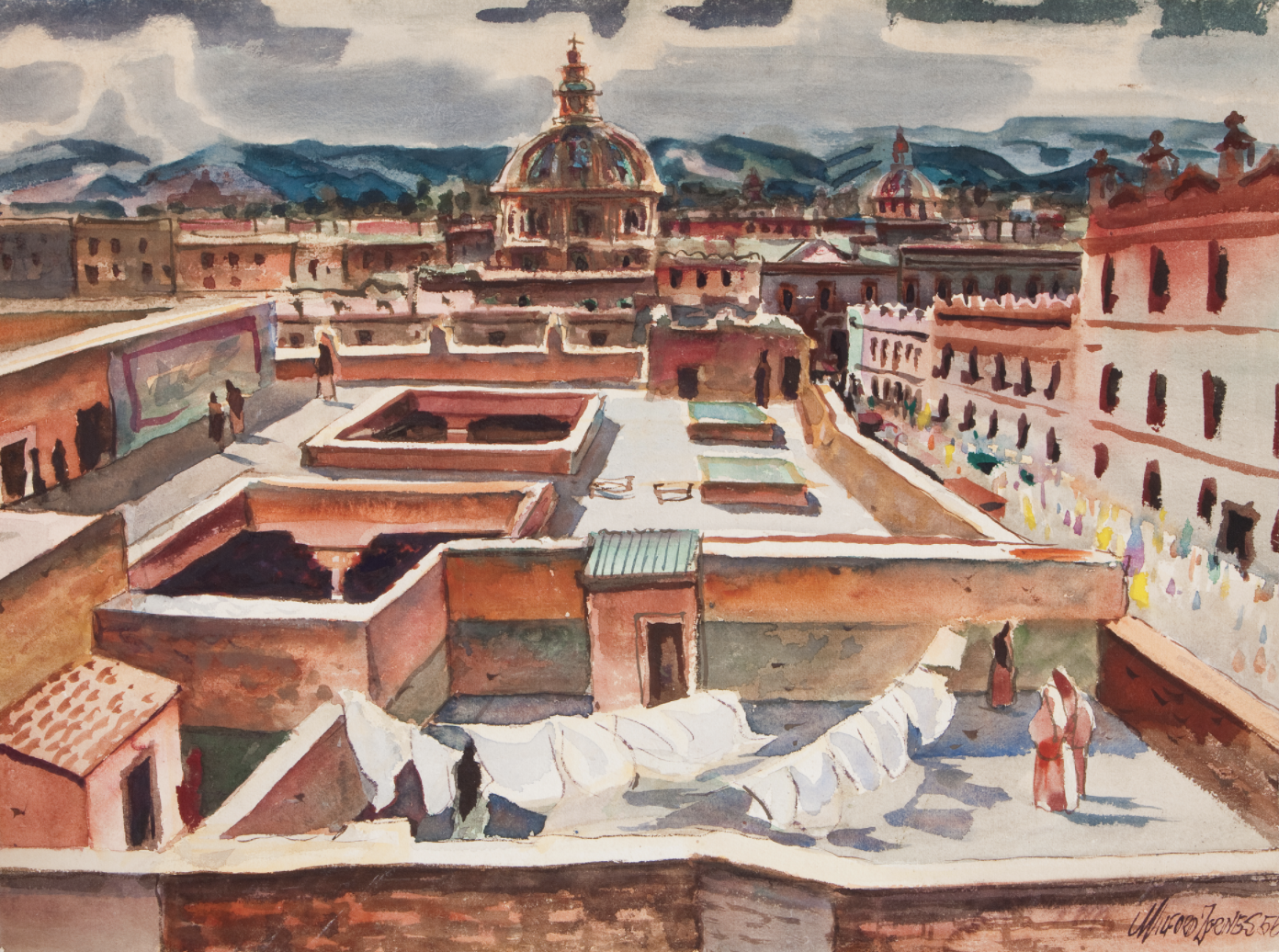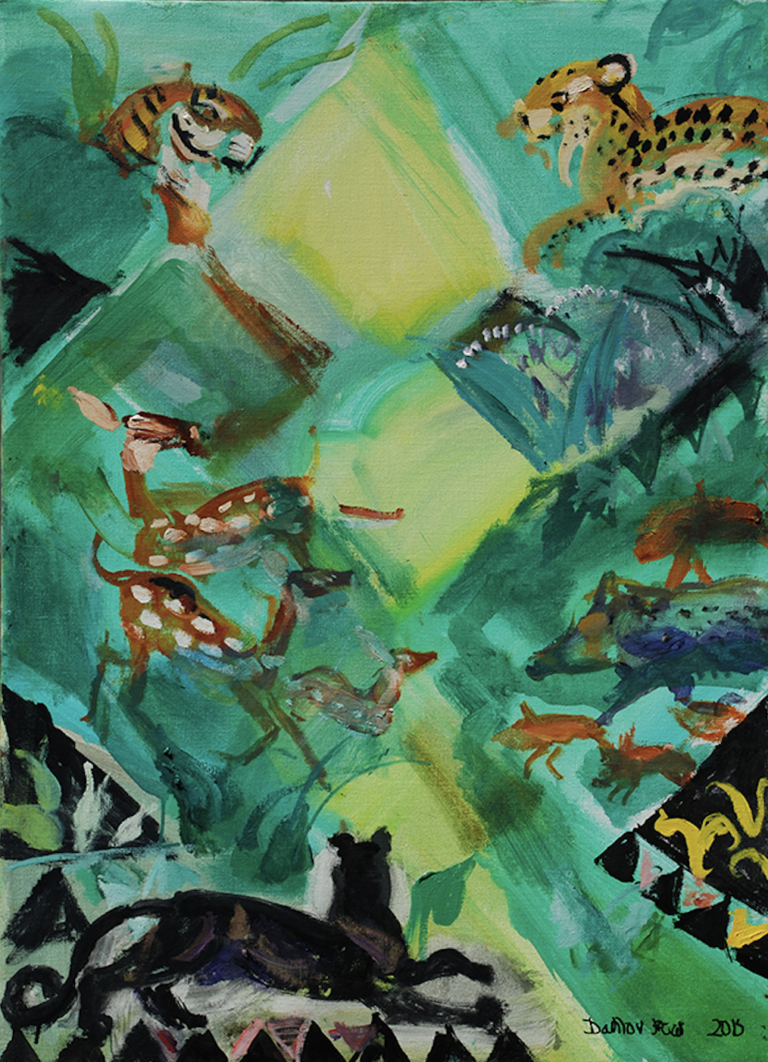
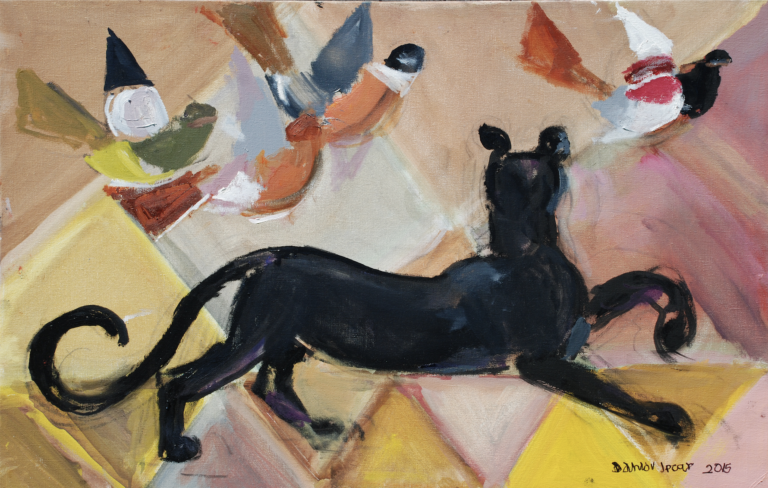

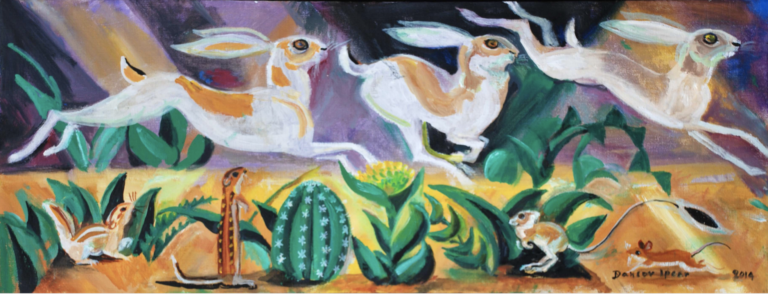
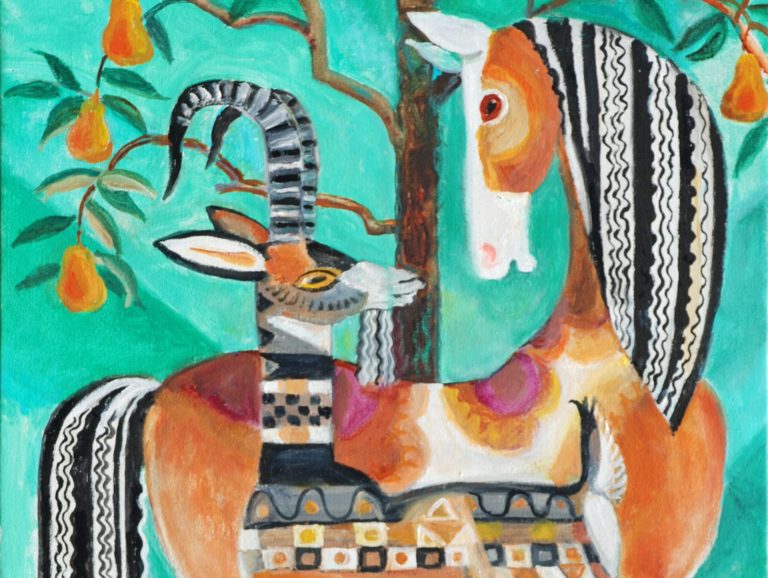
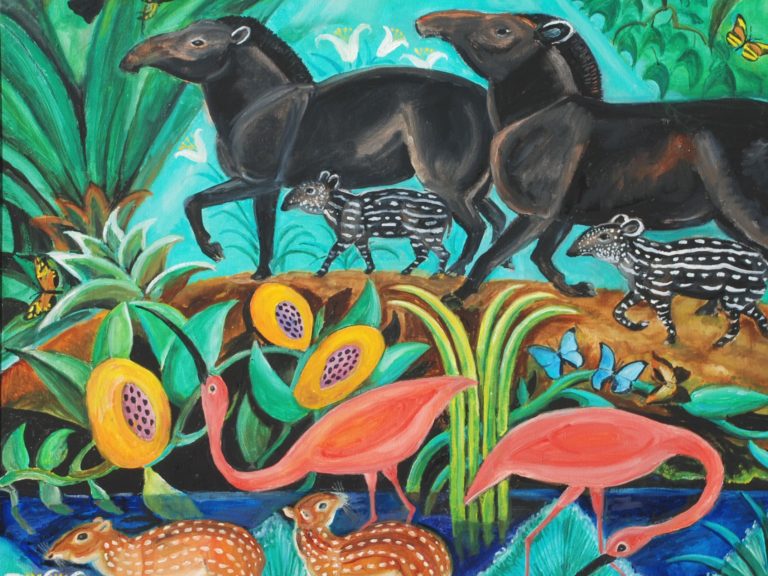

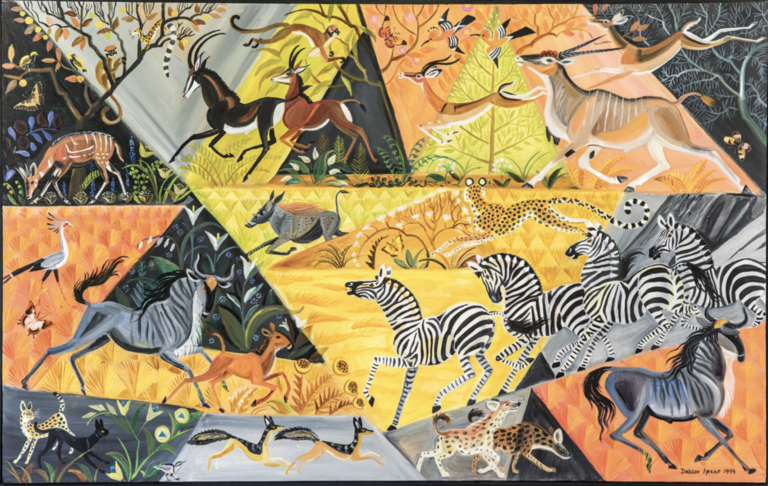
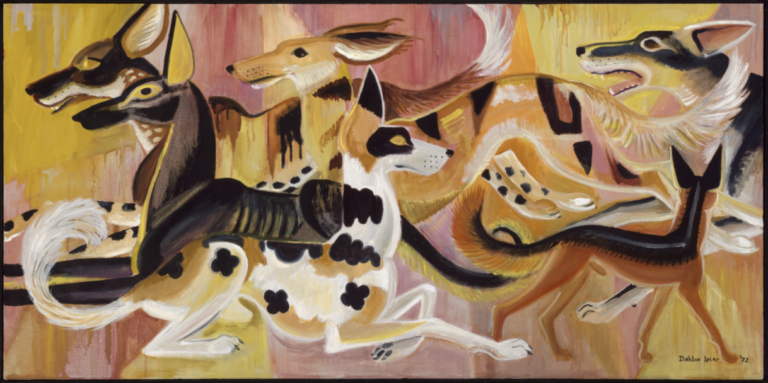


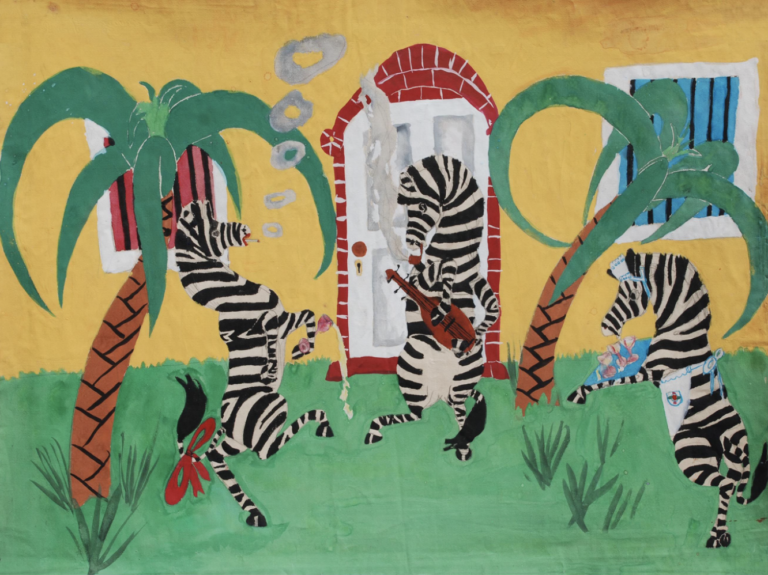

Dahlov Ipcar
1917 - 2017
“You are wiped out by a fog. I can see your white shirt, and can see your arms and hands, and I can see your legs, but not much. And anything on that side of the room is gone. It’s just black over there, black fog. It’s not solid black, it’s just very dense, deep fogginess. And it gets into the middle of my vision when I try to paint something. My hand comes out and can’t see what to do.”
Dahlov Ipcar in a 2015 Interview with The Vision & Art Project
Biography
Dahlov Ipcar was born in Windsor, Vermont, to artists William Zorach and Marguerite Thompson Zorach. She grew up in Greenwich Village. Shortly after marrying as a young woman, she moved to Maine, where she lived for the rest of her life. Ipcar was not formally trained in art, but her parents encouraged her to paint from an early age and served as her mentors.
In 1939, Ipcar was the first woman ever to have a solo exhibition at the Museum of Modern Art. The exhibition, called Creative Growth: Childhood to Maturity, featured work Ipcar had done between the ages of 3 and 22. It was the inaugural exhibition in a special space at MoMA called the Young People’s Gallery. For the next decade, she completed several WPA murals and continued to show her work in New York. Early on in her career, however, she retreated from the pressure of exhibiting her work in New York.
In the relative isolation of Maine, she discovered an approach to painting that she termed “non-intellectual cubism.” Painting highly stylized animals from memory and imagination against prismatic background shapes created an effect, she felt, that was true to the real without being slavishly realistic.
Although Ipcar is best known for her intricate and highly imaginative oil paintings, she also wrote and illustrated books and produced fabric collages, hooked rugs, needlepoint tapestries, and soft sculptures.
Among other institutions, her work is in the permanent collections of the Brooklyn Museum, the Metropolitan Museum of Art, and the Whitney Museum of American Art.
Ipcar’s post-macular work
For many years, Ipcar had a mild case of macular degeneration that she kept private. In 2015, however, she suffered a precipitous decline in her eyesight and could no longer finish paintings in her former manner. The unfinished paintings she produced at this time reveal her unique mastery and insight of composition through color and shape.
Ipcar saw these paintings as failures and at first feared her career as a practicing artist was over. But after a period of adjustment, she began to produce a new body of work. She relied on muscle memory, including a kinesthetic memory of form, to draw animals with bold lines on large sheets of paper, which she then used as the basis for assisted paintings. In one of her last interviews, she explained that her hand, which “knew a lot,” made these works possible.
V&AP Resources Related to This Artist

Feature Article
The Prismatic Dimension
As Ipcar's star rises, her vision has declined. Her recent work is unusually simple—and powerful in new ways
Read More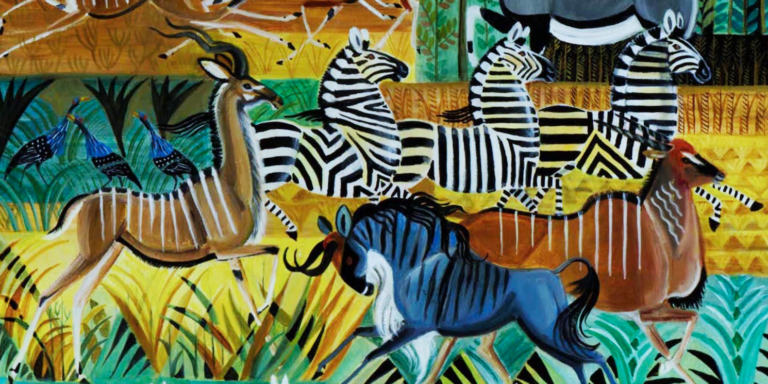
Feature Article
Dahlov Ipcar’s Enchanted World
We look back at this artist’s singular life and work on the first anniversary of her passing.
Read More
News Forum

